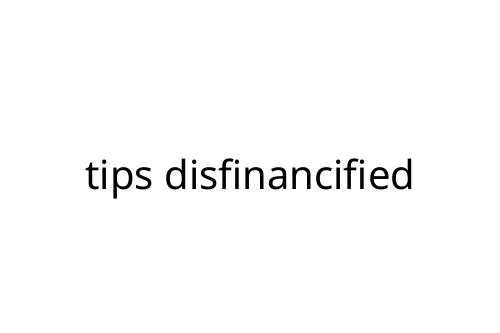tips disfinancified
If you’ve searched for “tips disfinancified,” you’re likely looking for practical advice to keep your finances under control and avoid becoming disorganized with your money. While “disfinancified” isn’t a common term, it has started showing up as a way to describe personal finances that have become unfocused or jumbled—when spending, debt, and savings plans are all out of sync. Here are some straightforward, no-nonsense tips to help you stay on track and sidestep the pitfalls of being disfinancified.
Get Clear on Where Your Money Goes
The first step is always awareness. Review your spending for the past month. Apps, spreadsheets, or even paper and pen—whatever you use, get a handle on your income and your outgo. It’s common to realize you’re spending more on subscriptions, meals out, or small online purchases than you thought. If your accounts look a mess, use this as your reset button.
Build a Simple Budget—And Stick to It
No need for fancy systems or complex formulas. Create a basic budget that sets clear spending caps for categories like rent, groceries, and entertainment. Automate what you can: bill payments, basic savings, even contributions to an emergency fund. Consistency beats perfection in the long run.
Prioritize the Essentials
When your finances feel scattered, focus on the basics: housing, utilities, groceries, and transportation. These keep daily life running. Don’t leave them to chance. If you hit a rough patch, cut non-essentials first—pause entertainment subscriptions or trim discretionary spending before undermining your core needs.
Tackle Debt Strategically
Carrying debt is one of the fastest ways to become disfinancified. List what you owe, from smallest to largest or highest-rate to lowest. You can use the “debt snowball” (pay off small balances first) or “avalanche” (attack high-interest accounts first) methods—choose the one you’re more likely to stick with. Set up automatic payments if possible so nothing slips through the cracks.
Emergency Fund: Not Optional
A stash of cash, even a small one, keeps minor emergencies from turning into major ones. Aim for at least one month’s expenses, saved in a separate, easy-to-reach account. This isn’t for planned spending or minor splurges—protect it for true setbacks.
Review and Adjust Regularly
No budget or financial plan is set in stone. Check in with your accounts every couple of weeks. Update your budget to reflect reality, not just your best intentions. If you find spending creeping back up or feel overwhelmed, reset—don’t give up. The goal is steady progress, not instant perfection.
Pros and Cons of Getting Organized
Staying on top of your money has benefits: less stress, better credit, and more control over your choices. But it takes discipline and honesty with yourself. Some months will go sideways. The main “con” is the time and attention needed, but over time, it pays off through fewer financial headaches.
Bottom Line
Disfinancified finances can sneak up fast. Keep your approach simple. Track your money, set a clear budget, and focus on the basics. Address debt head-on and protect your emergency fund. Review regularly—progress is more important than perfection.
With these tips disfinancified, you’ll be on stronger footing and ready to handle whatever comes next.



